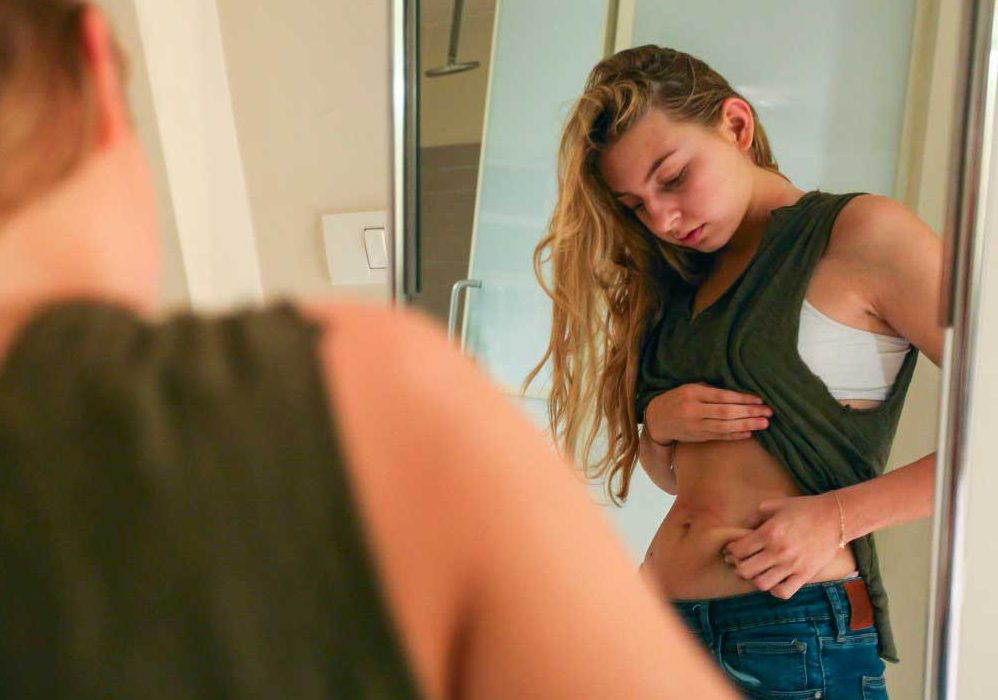How to Be Comfortable with Your Body Image

Cultural perception of beauty — our own and that of the media — changes, over and over again. Here’s what you can do to find self-esteem in any body shape era.
We admire what we see others admire. Most of us are afflicted by envy of designated desirable people and yearn for their traits. Body image and the media intersect.
We can’t escape the advertising and social media telling us what's attractive. Women want straight hair if theirs is curly, or curly if it is straight. They want longer (or less spindly) legs, bigger (or smaller) breasts, a smaller (or more rounded) butt. A man might want a stronger chin, a flatter belly, some extra inches in height or penis length and girth.
If you’re dissatisfied with your looks, it may help to know that cultural ideas about beauty are a form of fashion and, like fashions in clothes, they change.
YOU MIGHT ALSO LIKE: “Fat But Fit” Is a Myth
Body image and the media
Let’s take a tour of the American female ideal body image and the media of the past 125 years. Unusually tall women with haughty expressions became fashionable in the 1890s. But the “Gibson Girls” of the time, named for an illustrator, had dramatic curves. They were statuesque Marilyn Monroes, with luxuriant curls piled on their heads.
In the 1920s, the bridal updo disappeared and flat chested, narrow hipped girls were getting dates. Height was no longer required; the first Miss America, Margaret Gorman, was 5 ft 1 inches tall.
Busty curvy women reigned in the 1950s, with the arrival of Barbie dolls. Marilyn Monroe won our hearts. Later on, all eyes were fixed on a model called Twiggy, who could have been Marilyn’s pre-teen daughter.
In the 1980s, the new super models were a kind of amalgam of earlier fashions, women with Gibson-Girl height but narrow hips and flat chests. We started to see muscles (like Michele Obama’s decades later). But the boyish style got another moment, in the 1990s, when tiny women like Kate Moss and Winona Ryder won attention. Now Kim Kardashian is setting impossible standards with buttocks so bountiful they can balance a wine glass.
Following this zig-zag, you can imagine that a slight petite girl longed for long legs and an hour-glass figure in the 1890s and today craves a big muscled rear-end.
The trouble is that to a great extent, your body shape isn’t malleable. You can’t make your legs longer. The size of your breasts or butt really isn’t under your control, without cosmetic alterations. You can gain or lose weight and work out, but it’s very hard to make and keep significant changes.
Artists and lovers have always seen beauty with less conventional eyes. Take a look at “Annah the Javanese,” Paul Gauguin’s 1893 portrait of his short, muscular mistress, or “Portrait of Jeanne Hebuterne,” Modigliani’s portrait of his soft-middled love.
How to build self-confidence in your body image
For health reasons, it’s important not to carry too many extra pounds, but your primary goal should be fitness. Never obsess over dieting. Focus on a "live-it" rather than a "diet." Eat in a way you can live with rather than adopt a regime that feels like you could die.
Scientists debate whether beauty ideals for women may have underlying waist-to-hip ratios that indicate fertility and health. Let your goal be health, and your own style of beauty will shine through.
Updated:
February 08, 2023
Reviewed By:
Janet O’Dell, RN